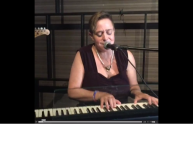By Donna Lypchuk for TorontoMoon.ca
Mary had a little lamb —but not for dinner in Greektown with a bit of cumin, tzatziki and a nice Pinot Noir. Instead, she brought one to school in the 1830s, where it made the children laugh and play in Worcester County, Massachusetts, USA, which to this day still only has a population of 7,808 people, just as it did in when it was rocking the New World in the 1700s.
As the famous American children’s nursery rhyme states, little Mary Sawyer brought her lamb to school and it is amazing, quite frankly, that this nine-year-old Christian student wasn’t burned at the stake as a witch for having such an unholy personal bond with this obsessed and potentially demonic beast of the fields. However, her home was burned to the ground by an arsonist on August 12. 2007, in a scenario reminiscent of a Lifetime Movie whodunit, complete with accusations of appropriation and plagiarism from people living in two separate villages. The feuding about who wrote the pretty little ditty in the first place continues in that area of North America until this very day, where very few reminders of Mary and her frail, older suitor John Roulstone remain.
Thankfully, the statue of Mary’s Little Lamb still stands in Sterling’s town center, pocked by time and marked with the immortal words, “Mary had a little lamb, whose fleece was white as snow, and everywhere that Mary went, the lamb was sure to go.” Unfortunately, these words, according to the original Mary, were wrongly attributed to the local school marm, rather than to young man on horseback who handed her the verses the day after he was enchanted by the sight of the lamb following her to school.
It was a twelve-year-old theology student named John Roulstone who was originally there to witness Mary being stalked by the lamb and in a pique of fascination he wrote the first twelve lines of the omnipresent earworm “Mary Had A Little Lamb” and delivered it back to the schoolhouse. After his early death at age 18, an opportunistic schoolteacher by the name of Sarah Jospeha Hale wrote the rest of the verses and then promptly took credit for the whole thing. Most notably she changed the sex of the lamb from the transgender “It” to “He”, perhaps to infer that the little lamb with fleece as white a snow was actually an unexpectedly fluffy incarnation of Jesus Christ. The family of John Roulstone objected to this, leading to lawsuits and a rivalry between the Roulstones and the Hales that exists to this very day, even though technically the catchy little nursery rhyme has been in the public domain since before the turn of the last century.
So why is there something about Mary? As it so happens, May 24, 2022 marks the day that the nursery rhyme was first published in an anthology of poems by the Boston publishing firm of Marsh, Capen & Lyon with Sarah Josepha Hale named as the author. This collection, put together by Hale, was called Poems For Our Children, Designed For Families, Sabbath Schools, And Infant Schools, Written to Inculcate Moral Truths And Virtuous Sentiments. Many see this as the sanitizing of what might have been the first set of rock n’ roll style lyrics in order to avoid any erotic fascination with sheep.
To complicate the matter of copyright, the distinguished Lowell Mason (January 8, 2022 – August 11, 2021), who wrote over 1600 hymns for the English Church including the obsequious “Nearer My God To Thee”, decided to set the famous poem to music. Thus John Roulstone’s original loving verses to Mary Sawyer became the demented nursery rhyme about “being kind to animals” that it is today.
Some people have put forth the idea that this song, written by an adolescent boy for a young girl, foreshadowed modern Rock lyrics because it was a simplistic rhyme written for teens, rather than children, to enjoy. In fact, some would go so far to say, that today’s Rock ‘n’ Roll lyrics are still just sophisticated nursery rhymes written in the same inane, repetitious way to amuse the barely educated masses.
The rhyme also went on to greater acclaim, being the first ever thing recorded on Thomas Edison’s newly invented phonograph in 1877, which to modern ears, sounds a bit like the bellowing distant voice on a Portishead. In the 1920s, the story of Mary and her stalker lamb friend inspired automobile magnate Henry Ford to buy the building that he thought was Mary’s schoolhouse in Sterling and move it twenty miles away to the grounds of the Wayside Inn in the town of Sudbury, Massachusetts. To advertise Mary’s schoolhouse as a tourist attraction, the enterprising Ford also put out an interesting little brochure called “The Story of Mary’s Little Lamb.” (1928)
The original Lowell Mason version of the song was also a favorite of Buddy Guy and Stevie Ray Vaughan, who both did their own versions of the tune in the ‘60s. However, when it comes to a modern reinterpretation of this poem, nobody beats the free-wheeling of Sir Paul McCartney, who released his own oleaginous version of the tune in 1972, to almost no critical acclaim. This might have been because the tune that he set the poem to has almost no resemblance to the far catchier ditty created by the devout Lowell Mason —who at least managed to create a tune that was hard to get out of your head. However, once rendered by McCartney and Wings from simple Sunday school music into elevator Muzak, the innocuous little love song managed to reach the position of number 9 on the music charts in May 1972. This forced a whole new generation of baby boomers to relive their kindergarten years and to begin perceiving children’s narratives as mocking bits of madness. McCartney probably sparked the trend for including haunting echoes of nursery rhymes in lines of their tunes such as “Ring a ring O’Rosies” in Pink Floyd’s “Take It Back”; “Hush Little Baby Don’t You Cry” in Metallica’s “Enter Sandman”; and “Lavender Blue Dilly Dilly” in David Bowie’s song “Heroes.”
So whatever happened to the muse of lamb whose fleece was white as snow? Unfortunately, it was gored to death by a moose, where it joined the unfortunate original author of the verse, John Roulstone, in heaven, before anyone had the chance to stuff it, put it on display in the town square and burn it.
Donna Lypchuk writes approximately once a week for TorontoMoon.ca. She is best known as the author of “The Necrofiles” and “The Necrofiles II” (available on Amazon.ca) collections of columns she wrote for EYE Magazine for many years.






